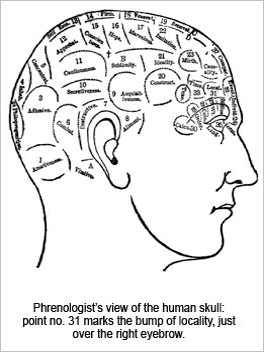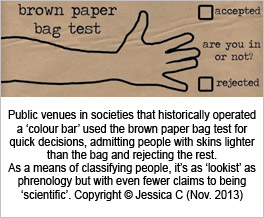MEMORIES – ADRIAN CORFIELD (1946-1990)
[Having been prompted to pen a brief account of Adrian’s life
by one of his old College friends,
I found that the memories just flowed.
So I’ve decided to web-publish this account in honour of Adrian
and his two grand-daughters, the second of whom was born yesterday.
P.J.C. 14 February 2014]
Adrian Corfield, also known to family and old friends as Ady, was a happy person, and he had a happy life, lived exuberantly. It was almost unbelievable that someone of such an unflaggingly cheerful and optimistic personality should die in mid-life of non-Hodgkins lymphoma. Before that happened, Adrian had certainly packed a lot into his 44 years. He was the second of six siblings, with loving parents, who brought up the family in simplicity and strong left-wing principles. There were lots of children’s games, books read aloud, cricket on the beach at family seaside holidays, laughter, and singing around the piano. Adrian himself was always the most cheerful and active among the throng. He loved company and he loved competitive sports, in his teens playing rugby (as anything from fly half to inside or outside centre) to almost Kent County standard. His next brother Julian spent hours with him, when they were kids, playing football and cricket in the back garden – and, on one memorable occasion, hurling coals purloined from the outside coal-shed, in a great trajectory over two fences into the next-but-one neighbour’s back-garden.
As a student, Adrian always lived on his wits, being averse to long periods of study. But his wits were good and he did well. He went from Chislehurst & Sidcup Boys County Grammar School (as it then was) to Oriel College Oxford (1965-8) to read Biology; and he got his Second, surprising his tutor in the process – not because Adrian lacked abilities but because he left his revision to the absolute last minute. He had found College life difficult at first, finding many public school Oxonians to be snooty and unapproachable. But, being a gregarious person, he eventually enjoyed the Oxford experience, becoming as much a part of town as of gown. His many friends remember him with great affection. Dave Sherrif (Oriel 1965-8) recalls Adrian as ‘a contemporary hero, athletic, good-looking, clever, full of fun, a bit of a rebel but without an ounce of malice. The rugby field was one of the few places where Adrian seemed to obey the rules’. He always loved parties, at which he would arrive on his motor-bike, accompanied by a beautiful girlfriend. And he was always restlessly active, playing harmless pranks and College rugby with equal enthusiasm. Adrian kept up all his family contacts while he was a student. He often visited our ever-effervescent cousin Jojo at his East Hendred (Oxon) general store and dairy, helping Jojo to repair old cars and to organise the dairy round; and Adrian enjoyed home lunches on Sundays with our uncle Christopher Hill, then Master of Balliol College Oxford, but never one to stand on dignity.
After University, Adrian’s career was highly eclectic. He renovated dilapidated but characterful old properties; he restored an old barge, moored by Oxford’s Port Meadow, on which he lived for a while; he taught at a crammer in Pimlico; he did an MSc in Environmental Sciences at Manchester University; he taught at a secondary school in Telford, whilst co-running a restaurant on a barge moored in Shrewsbury; and, finally two years before his death, he found his ideal job as a lecturer in the School of Life Sciences at Brighton University. His forte there was inducting nervous new recruits into the joys of student life. How Adrian would have coped long-term with the dragooning of academics in the increasingly regimented world of today’s Universities remains a moot point. But he was a pioneer of student-centred learning in its most positive guise; and his collegiality and his capacity to enthuse his students would have stood him in good stead.
In the course of all this, Adrian lived simply, not seeking to make money. He was a ‘Green’ before such issues became fashionable and was an early-warner of the dangers of climate change. He loved intensely, with a string of ardent relationships. He and the Corfield family remained especially friendly with three long-term partners: Wendy Mason (née Crew) who died from a brain tumour in 2000; Claire Grove, the radio drama producer, who has recently died; and Maria Bradshaw, who was with Adrian in hospital when he himself died. It was fitting that such a companionable man was in love and loved at the end. His ashes are scattered at Beachy Head, a beauty spot in which he took great delight. And some members of the Corfields walk on the cliff-tops each June in honour of his memory.
Adrian is survived by his daughter with Wendy, Melissa Hunter (née Corfield), and by his two grand-daughters, Scarlett (b.2012) and Jamie (b.2014). As a man who believed in women as equals, he would today be delighting in the feisty females who are his descendants. Adrian would, however, still be warning us all, ever more urgently, about the challenge of global warning.
Note: Adrian’s parents Alan ‘Tony’ Corfield and Irene Corfield were commemorated in short obituaries by PJC in The Guardian on 2 Sept. 2011 and 18 May 2013 respectively; and these accounts are also available on PJC’s website www.penelopejcorfield.co.uk. An obituary of Claire Grove by Maxine Irving was also published in The Guardian, 5 December 2013.
To read other notices, please click here.


